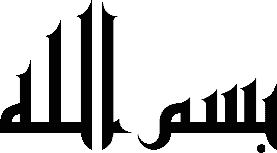What is a plugged milk duct?
If you're making milk faster
than it's getting expressed, it can get backed up in the duct. When this
happens, the tissue around the duct may become swollen and inflamed and
press on the duct, causing a blockage.
The first sign of a
plugged duct may be a small, hard lump that's sore to the touch or a
very tender spot in your breast. Some women also notice redness on their
breast. The area may feel hot or swollen, but may feel better after
nursing.
If you feel achy, run down, and feverish, it could be a
sign that your clogged duct has become infected. (Left untreated, a
plugged duct can evolve into mastitis, so don't ignore the symptoms.)
What causes plugged ducts?
Blocked
ducts can happen if your breasts are not getting completely drained of
milk on a regular basis. Some common situations that may lead to this
are:
- Your baby is having trouble feeding for some reason, such as an improper latch, or isn't feeding often enough.
- You're using a pump that's not powerful enough.
- You've abruptly weaned your baby.
- A duct becomes compressed or damaged, due to pressure from a nursing bra that doesn't fit well or from sleeping on your stomach, for example. This may trap milk inside a duct.
- You have an illness such as a cold. Illness may cause you to not want to feed your baby as often or pump as frequently.
- You're under stress. Stress lowers your body's production of oxytocin, the hormone that causes your breasts to release milk.
You've
had surgery, such as a breast biopsy. The area that was operated on may
interfere with milk drainage and cause a blocked duct.
What should I do?
Nurse,
nurse, nurse! It may be painful to nurse on the affected side, but
frequent nursing is crucial to completely empty the breast, which will
make you more comfortable and reduce inflammation.
If it's not too
painful, nurse on the side with the clogged duct first, because your
baby sucks strongest at the beginning and that may help dislodge the
plug. If your baby doesn't want to nurse enough to empty the breast on
that side, use a breast pump or hand express the milk.
Experts
also recommend that you massage the sore area frequently and firmly,
starting at the outside of the breast and working your way toward the
nipple. Applying warm compresses before nursing can help open the ducts
and relieve pain and swelling.
Vary your nursing position. For example, if you use the cradle hold, try the football hold or nurse lying down. This will help make sure that all of the ducts are drained.
Vary your nursing position. For example, if you use the cradle hold, try the football hold or nurse lying down. This will help make sure that all of the ducts are drained.
Also,
many women swear by this trick: Position the baby at your breast with
his chin pointed toward the sore spot. Then have him latch on and begin
nursing. This directs suction at the plugged duct.
Taking
ibuprofen may help relieve pain and inflammation. Ask your doctor or
lactation consultant before taking any remedies while you're
breastfeeding, though, even if they're the over-the-counter variety. You
might also want to check out our breast milk interactions chart.
Next to nursing, the most important thing is rest. This may seem difficult or impossible with a baby to care for, especially if you have other children, but it's an important element of recovery.
Next to nursing, the most important thing is rest. This may seem difficult or impossible with a baby to care for, especially if you have other children, but it's an important element of recovery.
To get a bit
more shut-eye, consider keeping your baby with you in bed. Put a stash
of things you'll need nearby, such as diapers, toys, books, and water,
to minimize trips out of bed. If possible, ask someone to help you for a
few hours a day so you can get some sleep.
Also eat nutritious foods to boost your immune system, and drink plenty of fluids to stay hydrated.
To
help with discomfort, some moms rely on cold packs while others prefer a
heating pad. See which provides you with the best relief.
Once
the duct is unplugged, the area may still be red or feel tender for a
week or so, but any hard lumps will be gone and it won't hurt as much to
nurse.
To help prevent future plugged ducts, avoid long stretches
between feedings. And make sure your nursing bras fit well and don't
have underwires, which can compress milk ducts.
Will clogged milk ducts affect my baby?
Sometimes
your milk flow on the affected side may be slower than usual, and your
baby may become fussy when nursing on that breast. But it won't hurt
your baby to nurse while you have a clogged duct. And the antibacterial
properties of breast milk will keep your baby safe from bacteria, even
if you develop an infection.
Can I still nurse?
Yes. It's the best way to get the duct unclogged.
What if home remedies don't work?
If
you continue to feel pain after trying rest, heat, massage, and
frequent nursing for 24 hours, call your healthcare provider. Call right
away if you develop a fever at any time, because this may mean that you
have an infection that requires medication.
Relieving Blocked Milk Ducts from Breastfeeding -- powered by ehow
.jpg)









http://ezzuramd.blogspot.com/search?updated-max=2010-11-18T17:33:00%2B08:00&max-results=15
ReplyDeletemarhamah, try tanya breastfeeding consultant from your senior, DR EZURA.
Kak El
ok dah... following all those steps. Warm shower/pack did the best.
ReplyDelete